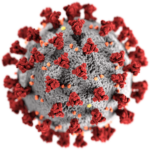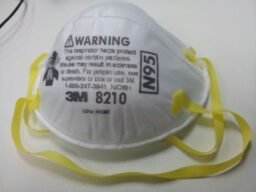This is my attempt at building a comprehensive timeline of events that describe the COVID-19 pandemic.
My goal for this project is to tell a story. As I start this project, I don’t know where the story is going, what subplots will develop, what characters will appear, develop, and maybe disappear. I certainly don’t know how this story is going to end. But I think it’s going to be a wild ride.
This is an America-centric timeline, but I’ve included key pandemic events from around to world to keep perspective that this truly is a global catastrophe, not just American.
A Living Document
Since the pandemic is a work in progress, this story is a work in progress. As new information becomes available I plan on incorporating it where it belongs on the timeline. So please come back often and see how this story grows. With luck, it may have a happy ending.
Source Data
All source data in the form of an Excel spreadsheet is available at the end of this timeline under a creative commons license. Readers may freely download this and add to it. If you know of a key event that should be in this, please contact me and let me know. All references, cited in this timeline and linked to icons, can be found in the spreadsheet. My readers are invited to use the links and follow threads where ever they lead.
All events are placed in the timeline when they occur, not when they were “discovered” or otherwise made public. In some cases specific events were not publicized until months after the event occurred. I think that putting these event in proper context helps understand the overall history of how we got here.
Contact Us
Your message has been sent
Prelude <> Nov/Dec 2019 <> January 2020 <> February <> March <> April <> May <> June <> July <> August <> September <> Source Data
Prelude
This timeline will start several years prior to the first known appearance of the novel coronavirus. I believe this is necessary to create proper context for events during the actual pandemic.
February 2007
Year 2011
Year 2014
May 27, 2014
October 27, 2014
Year 2016
January 1, 2017
January 6, 2017
January 13, 2017
Late 2017
January 18, 2018
February 1, 2018
Spring 2018
March 18, 2018
May 7, 2018
May 2018
March 12, 2019
July 2019
August 2019
September 2019
October 2019
October 18 – 27
What We’re Fighting

Popup Windows
In addition to downloadable files and sidebar text, I’ve also scattered popup windows throughout this timeline. These popup windows provide amplifying information on key events.
![]()
Popup Window Example
Icon Symbols
Meaning of icons used in the main timeline narrative:![]() General Information
General Information![]() Continuation of previous information, with a different reference
Continuation of previous information, with a different reference State-of-Emergency or Stay-At-Home Declared or Rescinded
State-of-Emergency or Stay-At-Home Declared or Rescinded![]() Provides a video clip
Provides a video clip
Provides a pop-up information window
– Move your mouse over an acronym, name, or term, used in this timeline for an ![]() Link for a Download File
Link for a Download File
Preamble
![]()
My Preamble and full disclosure of bias
Commentary
![]()
No One Could Have Anticipated…
2006 – 2008
![]()
Avian Flu
2009 / 2015
![]()
Swine Flu
2014
![]()
Ebola
2012 / 2015 / 2020
![]()
MERS
2020
![]()
Coronavirus
Documentation
The following downloads are original documents referenced in this section of timeline.
![]()
Global Health Security Index Building Collective Action and Accountability October 2019
MedRxiv Archives
Study hosted by the MedRxiv archives, published as a pre-print pending peer review by the Universiata de Barcelona, June 13, 2020, reports finding traces of novel coronavirus in Barcelona, Spain, wastewater sample of March 12, 2019. To date this is the earliest known presence of the novel coronavirus.
Tumori Journal
Study hosted by the Tumori Journal, conducted by the Italian National Cancer Institute (INT) and released November 16, 2020, which indicates that the Coronavirus was circulating in Italy as early as September 2019.
Additional Reading
The following article offers exceptional insight into the years previous to the Coronavirus pandemic, showing the amount of preparation various government and non-government agencies put into response planning for future pandemics.
Meatpacking Companies Dismissed Years of Warnings but Now Say Nobody Could Have Prepared for COVID-19
This article provides an interesting in-depth look at a new type of research team that developed during the pandemic, responsible for uncovering documents key to understanding the origins. The group, , also provides insight into the future of Internet-based research.
Exclusive: How Amateur Sleuths Broke the Wuhan Lab Story and Embarrassed the Media
This article, published September 9, 2021, provides insight into possible US-funding to a Wuhan Lab for research.
NIH DOCUMENTS PROVIDE NNIH Documents Provide New Evidence U.S. Funded Gain-Of-Function Research In Wuhan
This is an exhaustive article providing an in-depth look at investigations into the origin of the Coronavirus, and politicizing that has “muddied the waters” around valid research.
The Lab-Leak Theory: Inside the Fight to Uncover COVID-19’s Origins
This is an exhaustive research article on the origins of the Coronavirus. The authors of this article, published July 26, 2022, show evidence that the origins were in the Huanan Seafood Wholesale Market in Wuhan, China.
Abstract: Understanding how severe acute respiratory syndrome coronavirus 2 (SARS-CoV-2) emerged in 2019 is critical to preventing zoonotic outbreaks before they become the next pandemic. The Huanan Seafood Wholesale Market in Wuhan, China, was identified as a likely source of cases in early reports but later this conclusion became controversial. We show the earliest known COVID-19 cases from December 2019, including those without reported direct links, were geographically centered on this market. We report that live SARS-CoV-2 susceptible mammals were sold at the market in late 2019 and, within the market, SARS-CoV-2-positive environmental samples were spatially associated with vendors selling live mammals. While there is insufficient evidence to define upstream events, and exact circumstances remain obscure, our analyses indicate that the emergence of SARS-CoV-2 occurred via the live wildlife trade in China, and show that the Huanan market was the epicenter of the COVID-19 pandemic.
The Huanan Seafood Wholesale Market in Wuhan was the early epicenter of the COVID-19 pandemic
Prelude <> Nov/Dec 2019 <> January 2020 <> February <> March <> April <> May <> June <> July <> August <> September <> Source Data




